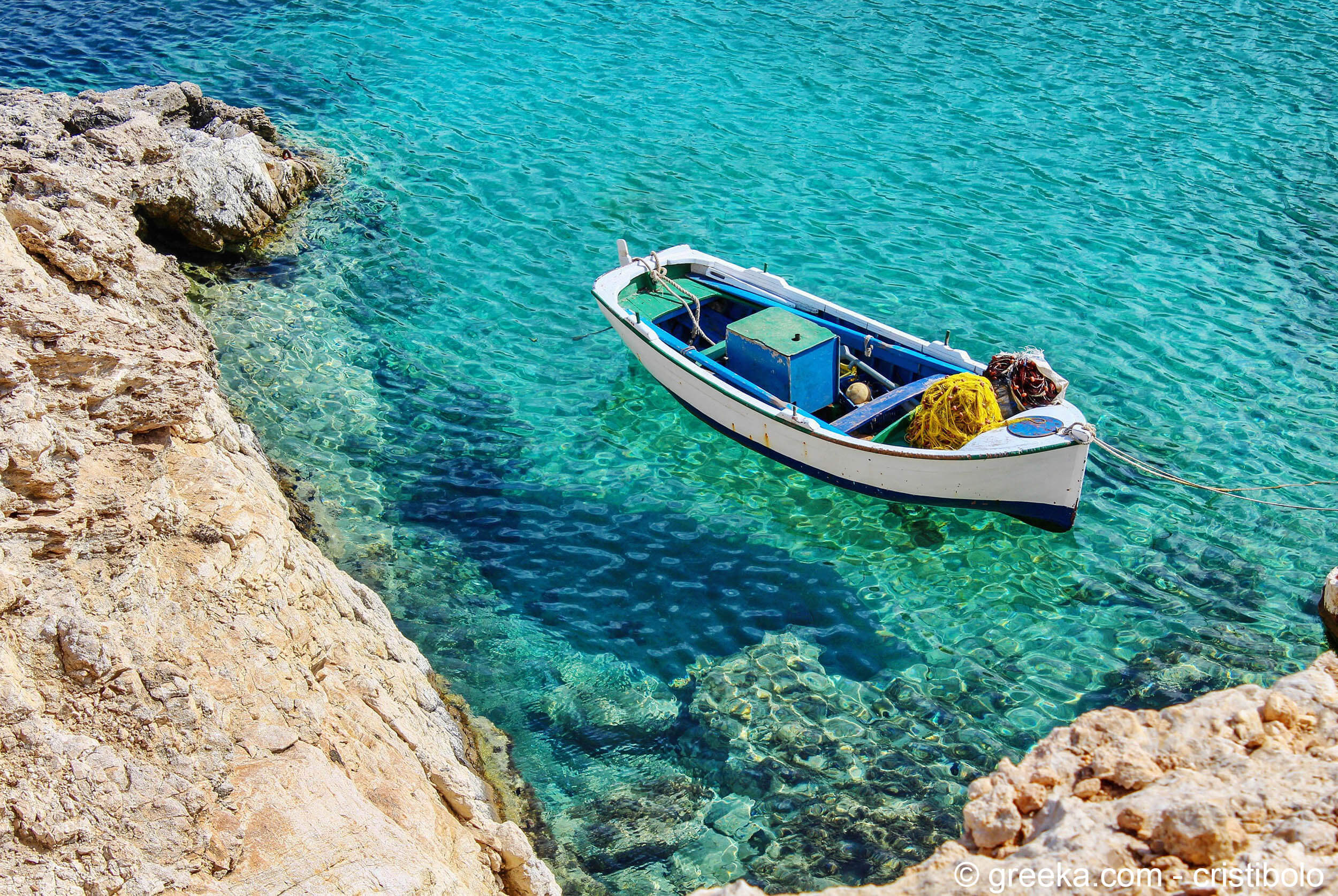By on 02-09-2021
Share this post:
Greece is privileged to have a big number of islands that are among the most popular summer holiday destinations in the world. They are divided into 7 different groups according to their geographical location. These are the Cyclades, the Dodecanese, the Eastern Aegean islands, the Saronic islands and the Sporades which are located east of the Greek mainland, in the Aegean sea. The Ionian islands are west of the Greek mainland and Crete which is south.
Although some of them have a national or an international airport, the main and most popular way of travelling to the islands is by ferry.
Travelling from the mainland to the islands
All of the Greek islands are connected to the Greek mainland by ferry.
- The Cyclades, the Dodecanese, the Eastern Aegean, the Saronic and Crete are connected by regular ferries to one or more ports of Athens: Piraeus which is the main and largest port of the Greek Capital, Rafina or Lavrio.
- The Ionian islands are connected to the Greek mainland by ferry via the ports of Kilini and Patra which are towns in the western Peloponnese.
- The Sporades are connected to the Greek mainland via the ports of Ag. Constantinos, Mantoudi and Volos.
Island-hopping
Apart from the ferry connection to Athens or other big ports of the Greek mainland, there are also interconnecting ferry lines between the islands. This means that you can easily travel from one island to another that may or may not be a part of the same island complex. For example, Mykonos and Santorini, Crete and Santorini, Paros and Naxos are connected by regular ferries on a daily basis. The in-between island ferry connections have made island hopping a very easy and popular way to discover more than one different place during your stay in Greece.
Note:
>Many travelers fly directly to the airport of an island that is connected to their country and then continues by visiting other islands by ferry. For example: Fly to Mykonos International Airport and then take a ferry to Santorini.
>Not every island is connected to all the rest! The islands of the Ionian Sea are not connected by ferry to the islands of the Aegean sea. For example, Zakynthos is not connected by ferry to Crete or Santorini.
>Read about island hopping destinations from Mykonos & island hopping from Santorini
Ferry routes and timetables
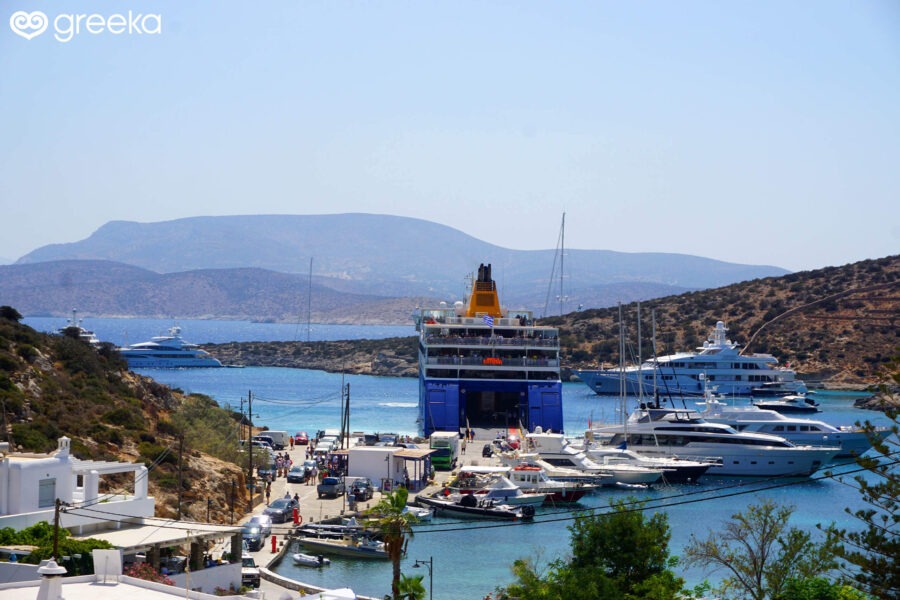
Travelling by ferry to the Greek islands
On our ferry booking engine, you will find all the available ferry routes and timetables as soon as they are officially announced by the ferry companies. Ferries are operating all year round, connecting the islands to the mainland. Of course, during the summer season, ferry crossings are much more frequent and more schedules and routes are added.
The ferry schedule of the summer season is officially announced around the month of March and online ticket purchase is available the moment the ferry schedule appears on our booking engine results page. Some ferry crossings connecting the islands with the mainland are fixed and published many months ahead. For example ferry crossings by Blue Star Ferry run all year round, providing to travelers the possibility to visit the islands even off-season.
During the summer season (June-October), which is the busiest touristic period in Greece, there are numerous daily ferry crossings to and from the most popular islands, as well as connections between islands.
> Although many ferry connections are offered during the high season, early booking is recommended, since popular and even less popular routes get sold out. <
Ferry companies and vessels
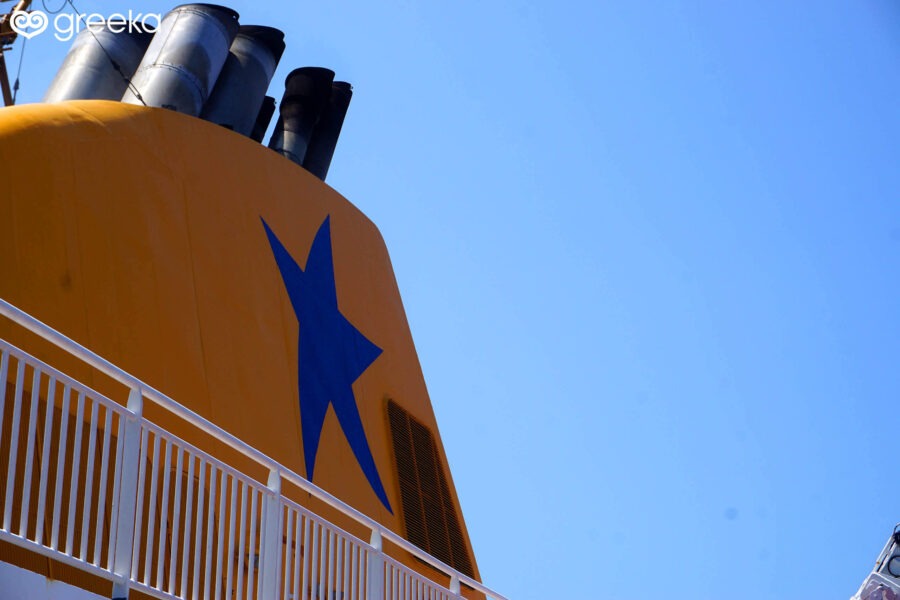
Blue Star Ferries is a popular company operating year-round crossings in the Aegean Sea
There are many and different companies operating at the Greek ports and islands. The most popular ones are:
- Blue Star ferries: This company uses big conventional vessels for ferry crossings from Athens to the islands of the Aegean Sea: the Cyclades, the Dodecanese, the Eastern Aegean islands and Crete. Their ferry routes are considered very popular, prices are low, and they offer regular ferry crossings throughout the year, even during the winter. These vessels have big indoor and outdoor spaces, restaurants, cafes, shops, air-type seats, a garage and cabins for long or overnight trips.
- Seajets: This is the most popular high-speed ferry company in Greece. The company owns 17 high-speed vessels that operate in the Aegean Sea, connecting the Cyclades to Athens, as well as many Cycladic islands to one another and Crete. Seajets ferries are ideal for island-hopping due to the variety of destinations offered. Despite the vessels being fast, strong winds can affect them, causing seasickness and delays. There are air-type seats and a few cafeterias on board, while some of them also have a garage.
- Golden Star Ferries: This company has two conventional and one high-speed ferry connecting Athens to the Cyclades via the port of Rafina, as well as some Cycladic islands to one another.
- Minoan Lines: Minoan Lines is a ferry company that connects Athens to Crete. Their vessels are ideal for long trips and have cabins which you can book to stay during the trip. Apart from the popular ferry crossings to Crete, Minoan Lines also offer schedules to some of the Cycladic islands and also connect Greece to Italy.
- Anek Lines: Anek Lines ferries operate in the Aegean Sea, connecting Athens to Crete, as well as a few other islands. This company also offers ferry crossings between Greece and Italy. The vessels are spacious and designed ideally for long and overnight trips.
- Levante ferries: This is the most popular ferry company that operates in the Ionian Sea, connecting the Ionian islands to Patra and Kilini ports on the Greek mainland.
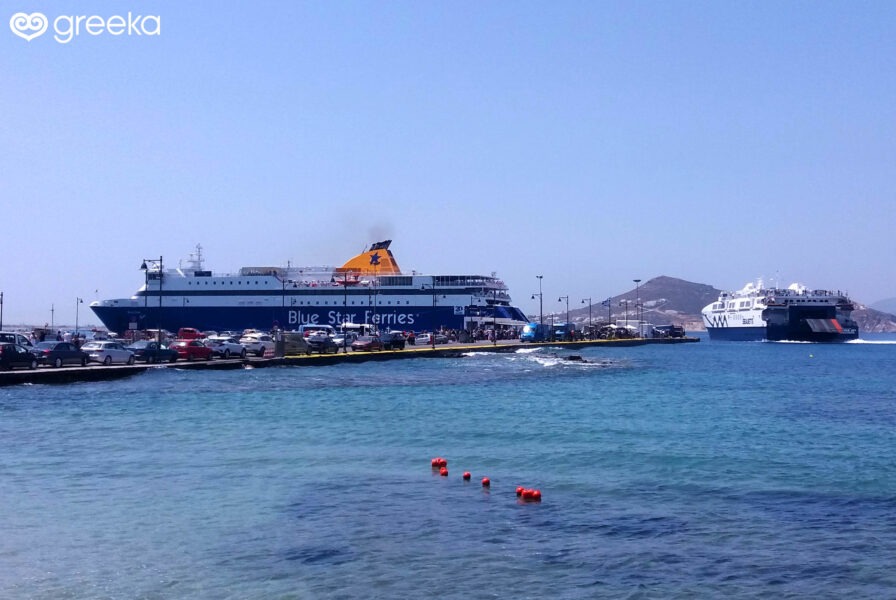
A Blue Star Ferry conventional ship and a Seajet high-speed vessel.
Seat types, Cabins and Vehicles
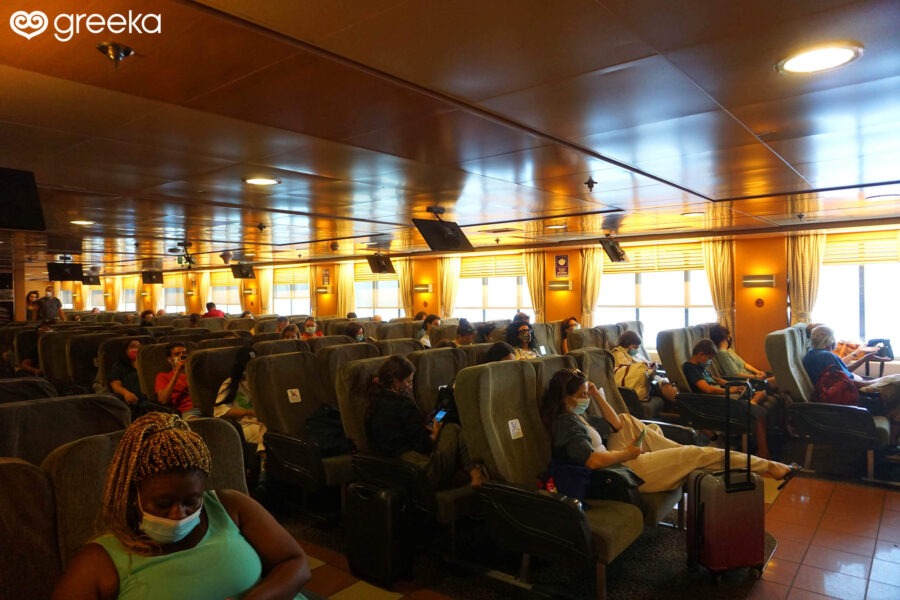
Air-type seating area.
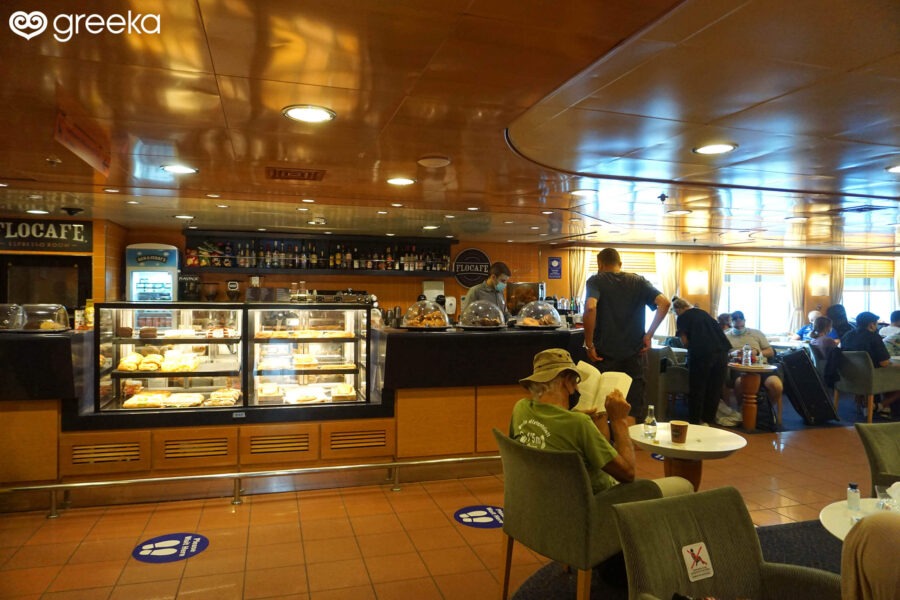
An indoor self-service cafeteria for a coffee and a snack.

Outdoor space.
When booking your ferry ticket you will be asked to select your seat type. Depending on the vessel and the ferry company, there are different seat types on each ship:
Conventional ferries
Economy lounge/deck: On a conventional ferry, there is an “economy lounge/deck” which covers the biggest part of the ship. Buying this type of ticket is the cheapest and most popular way to travel, while it also allows you to pick a seat or to move around in these areas. The seating is not numbered so you can seat randomly wherever you want.
Air-type seats: You can book a numbered air-type seat within the economy lounge area with a small extra fee, which can make your journey more comfortable.
Business-class lounge: The business class lounge is kept only for passengers who travel business class. This area is less crowded and provides more comfort.
Cabins: You can book a cabin for long or overnight journeys. There are cabins with or without a view and a private WC/Shower. Normally, cabins are equipped with 1,2,3, or 4 beds and there are some deluxe options too. Travelers travelling to or from Crete, the islands of the Dodecanese, the Eastern Aegean or some remote Cycladic islands, usually prefer booking a cabin for a more relaxing trip.
Vehicle: When transferring your vehicle by ferry, you have to pay an extra fee. The price depends on the car or moto size and the destination.
High-speed ferries
All high-speed ferries have numbered airplane seats in the Economy and in the Business Class lounges. When buying a ticket for a high-speed ferry, the number of your seat will be directly indicated on the ticket. There are no outdoor spaces and moving around the ship is restricted.
>Note that there are no cabins and some vessels of this type do not have a garage.
Ferry connections from Athens to the islands
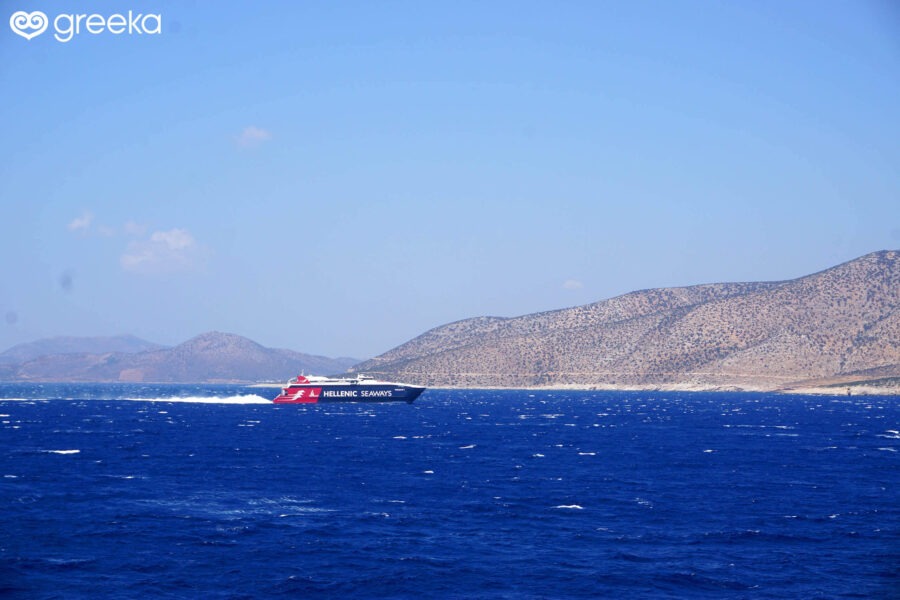
A high-speed vessel crossing the Aegean Sea
Connections between Athens and the islands of the Cyclades, the Eastern Aegean Sea, the Dodecanese and Crete are achieved through the port of Piraeus.
Rafina and Lavrio are two minor ports operating ferry crossings for some of the Cycladic islands. Rafina is famous for ferry crossings to Mykonos and other western Cyclades.
The port of Piraeus is located 12km away from the Athens city center and it is the largest port of Greece. It has numerous docks and gates for different island destinations. When buying your ticket, make sure to check the location and the exact gate number.
You can reach the port by car and taxi or take the electric railway from Kifissia to Piraeus (green subway line). Other options include the bus lines 040 from Syntagma and X96 from Athens International Airport.
- Ferries from Piraeus to the Cyclades
The departure points for ferries to the Cyclades are Gates E6, E7, E9 and E10.
22 out of all the inhabited Cycladic islands are connected to the main port of the Greek capital, Piraeus. More specifically, Amorgos, Anafi, Andros, Donousa, Ios, Iraklia, Kimolos, Kythnos, Koufonisia, Milos, Mykonos, Naxos, Paros, Folegandros, Santorini, Serifos, Sifnos, Sikinos, Syros, Schinoussa, Tinos and Thirasia are connected to Piraeus via ferry. Regarding the most popular destinations among the Cyclades, multiple ferry crossings per day are available, whereas ferry departures to remote Cycladic islands take place once per day or a few times a week.
- Ferries from Piraeus to the Dodecanese
The departure point for ferries from Piraeus to the islands of the Dodecanese is usually Gate E1. All islands of the Dodecanese are connected with Piraeus port with daily or weekly ferries. More specifically, you can reach Rhodes, Kos, Astypalaia, Karpathos, Nisyros, Kalymnos, Leros, Patmos, Lipsoi, Symi, Tilos and Halki with a direct ferry.
- Ferries from Piraeus to Crete
Crete is connected to Piraeus by ferry. The ports of Crete that are connected to Piraeus are Heraklio, Chania, Sitia and Rethymno, whereas the ferries with direction to Crete depart from the gates E2, E3, E6 and E7 of Piraeus port. The trip to Crete lasts around 9 hours and booking an overnight ferry with a cabin is very popular when travelling to or from Crete.
- Ferries from Piraeus to the Saronic
The Saronic islands (Aegina, Spetses, Hydra, Agistri and Poros) are easily accessible by daily regular ferries that depart from gate E8 of Piraeus port. The ferry crossings are numerous and the trip duration is short, so even a day visit from Athens can be organized.
Buy your Ferry Tickets
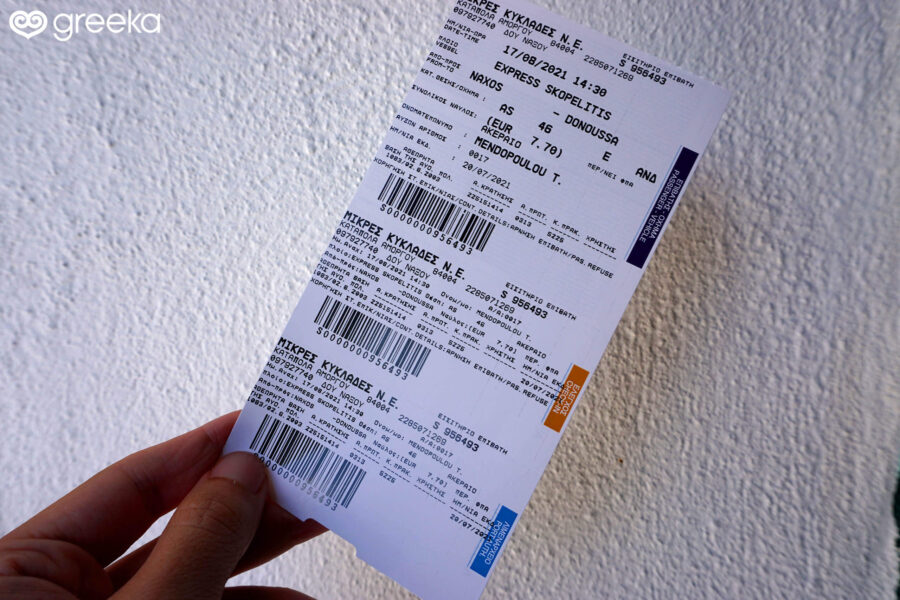
This is what a ferry ticket to the Greek islands looks like.
Ferry tickets can easily be purchased online through our booking engine. The steps are simple and the procedure lasts no more than 2-3 minutes:
- Step 1: Make a simple search or multiple itinerary searches (island-hopping). Add a number of passengers and vehicles.
- Step 2: All the available ferry companies and their vessels for the itinerary requested will appear in the results, along with the prices, departure times, and the duration of the trip. Select the one that suits your needs the most.
- Step 3: Insert your seat or cabin preferences, as well as the name and type/age of the passengers.
- Step 4: Pay online for your ferry tickets on a secured server with your credit card or a PayPal account.
- Step 5: You will instantly receive an email with your vouchers or e-tickets*. Many ferry companies provide e-ticket services which means that you will receive your ticket by email. If a ferry company does not provide e-tickets, you can get your tickets at the port before the departure by showing your voucher or having them sent to you by mail at your house or office address.
*Remember to check your spam folder too.
Important facts:
- Fixed prices: Ferry tickets in Greece have a fixed price, which means that the cost remains the same regardless of the time of purchase. No matter whether you book your ticket 5 months in advance or 2 days ahead of travelling, the price will be the same. Also, a fixed price guarantees that ticket costs will be the same everywhere in the market: from online booking engines to ports and physical ferry ticket stores.
- No luggage fee: Unlike travelling by plane, luggage in ferries is not charged. This means that you can travel with as much luggage as you want without paying an extra fee. You can carry your luggage with you on the deck of a conventional ferry or you may be asked to leave it in a designated area, especially when travelling with a high-speed vessel.
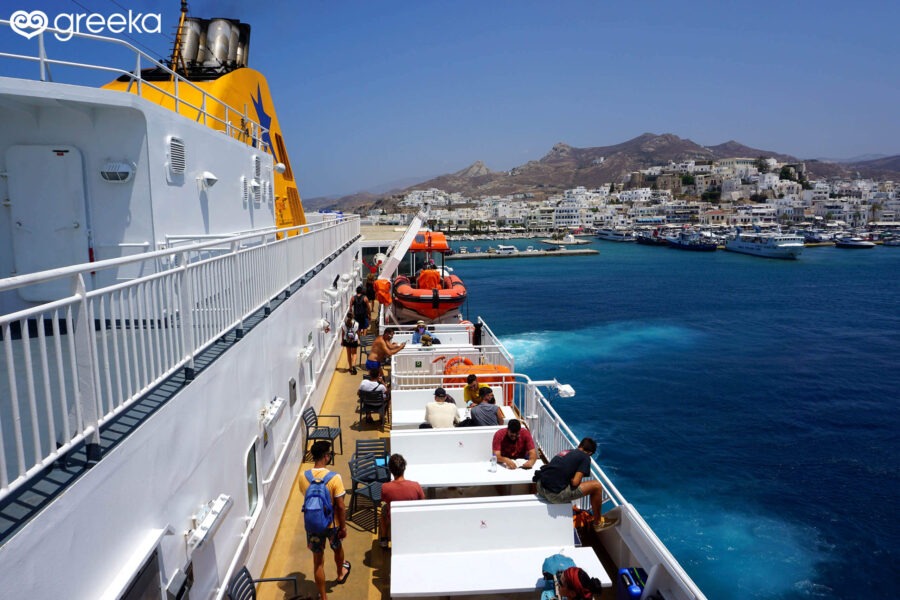
Island hopping is the best way to discover more than one island.
Boarding on a ferry

Boarding on a ferry. Remember to have your ticket and any other document ready.
Passengers are requested to be at the port 1.5 hours ahead of departure time. When boarding on a ferry, you will be requested to show your tickets. You are also advised to keep in hand your travelling documents but usually, there is no passport/ID card control. Note that you should keep your tickets throughout the ferry trip in case of extra controls.
During the COVID19 pandemic, some extra health and safety protocols have been established for travelling by ferry. These mainly consist of filling out a pre-boarding health form and demonstrating a vaccination certificate or a negative test result. The use of a face mask in all indoor and outdoor spaces of the ship, as well as the social distancing of 1.5 meters are two basic rules that you should consider during your trip. To stay up-to-date with all the protocols, you are advised to check our special COVID19 updates section before travelling.
From Piraeus
If you are travelling from Piraeus, it is very important to find the exact Gate of departure (it is indicated on the ticket). The waiting area is just a queue in front of every ship. Ticket control is carried out at the entrance of the ferry. If you are traveling in a car, you will have to enter the ferry through the garage in order to park it. Remember to hold your ticket and the car’s ticket too.
From the islands
Island ports are usually very small and the waiting area is an outdoor space on the dock, under a canopy. Ferries do not stay long on the islands; they leave as soon as they allow passengers to disembark and embark. So make sure to be there on time!
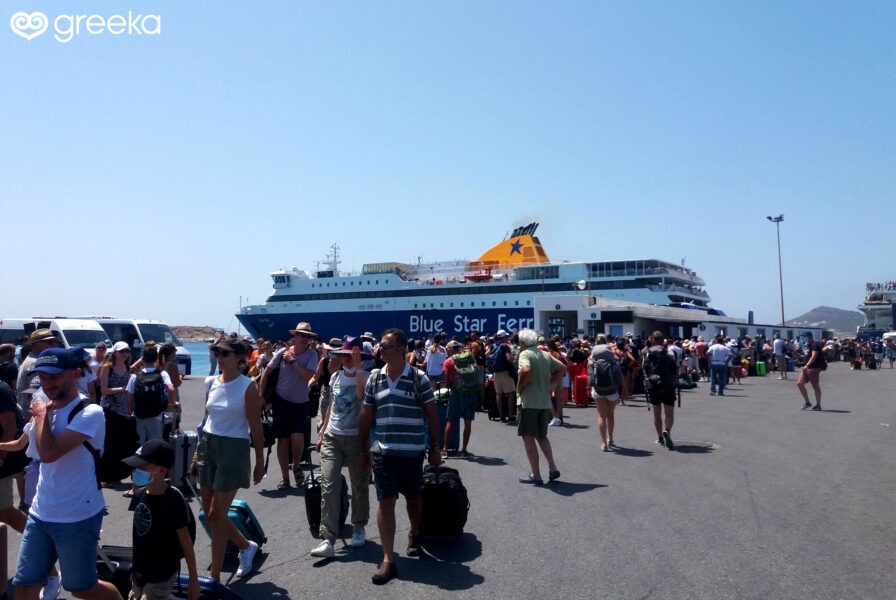
Embarkation and disembarkation at the port of an island
Note:
> Most of the time, the ferry rides are easygoing and followed by amazing sea views. If you are travelling with a conventional vessel, you will have the chance to walk around the different decks, drink a coffee or have lunch. If you are travelling with a high speed vessel, you will have to remain seated for most of the time.
> Delays occur quite often, especially for high-speed vessels, so it is important to take this into account when organizing your holidays.
> Remember that most of the time, a ferry trip includes more than one stop to other islands in order to embark and disembark travellers. When reaching a port, there is an audio announcement in Greek and in English, asking passengers with a specific island/port destination to disembark. Remember to pay extra attention and if you have any questions regarding your destination port and the arrival time, feel free to ask the ship crew members or your co-travellers.
Enjoy your time at the Greek islands!
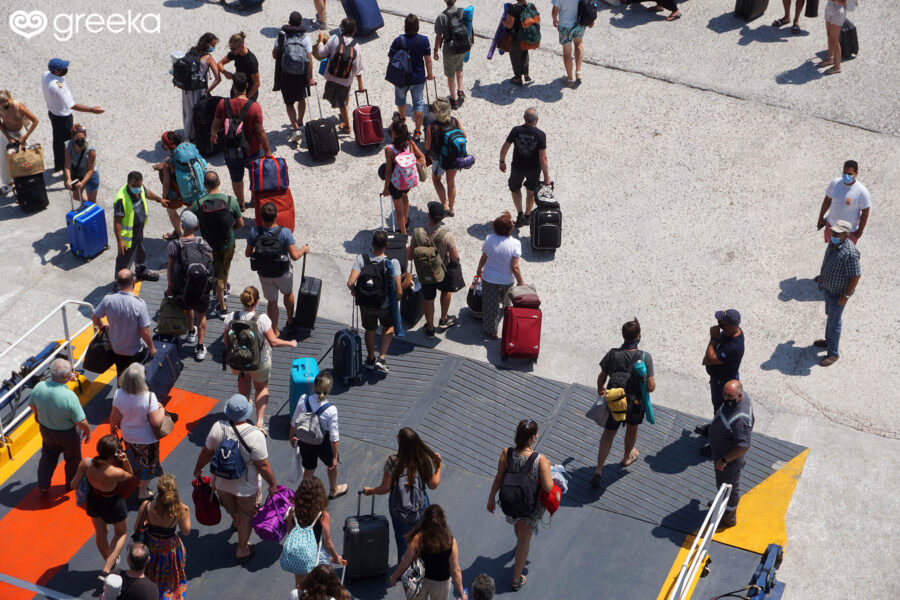
Arriving at your destination.



